Evolution of China’s Building Energy Service Industry Based on Synergetic Theory
Abstract
:1. Introduction
- (1)
- What are the main order parameters that can drive the BESI system through the perspective of synergetic theory?
- (2)
- How do the order parameters influence the BESI system and subsystems?
2. Literature Review
2.1. Self-Organization, Synergism, and Order Parameter
2.2. Building Energy Service Industry
3. Research Methodology
4. Order Parameter of BESI System
4.1. Synergetics in BESI
4.1.1. Intra-Subsystem Synergy
- (1)
- Synergy of subjects
- (2)
- Synergy between subjects
4.1.2. Synergy between Subsystems
- (1)
- Offering of building energy service
- (2)
- Operation of BESI system
- (3)
- Driving forces of BESI system
4.1.3. Synergy between the System and the External Environment
- (1)
- Adaption to the external environment
- (2)
- Impact on the external environment
4.2. Identification of Order Parameters
5. Empirical Results
- (1)
- Technological innovation
- (2)
- Industry standard
- (3)
- Financial support
6. Discussions and Policy Implications
6.1. Explaining the Developmental History of BESI
6.2. Directing Future Trend of BESI
6.3. Policy Suggestions for the BESI
7. Conclusions
Author Contributions
Funding
Institutional Review Board Statement
Informed Consent Statement
Conflicts of Interest
References
- Liu, Z.; Guan, D.; Moore, S.; Lee, H.; Su, J.; Zhang, Q. Climate policy: Steps to China’s carbon peak. Nature 2015, 522, 279–281. [Google Scholar] [CrossRef] [PubMed] [Green Version]
- Liu, Z.; Guan, D.; Crawford-Brown, D.; Zhang, Q.; He, K.; Liu, J. A low-carbon road map for China. Nature 2013, 500, 143–145. [Google Scholar] [CrossRef] [PubMed]
- Wang, J.; You, K.; Qi, L.; Ren, H. Gravity center change of carbon emissions in Chinese residential building sector: Differences between urban and rural area. Energy Rep. 2022, 8, 10644–10656. [Google Scholar] [CrossRef]
- Wu, K.; You, K.; Ren, H.; Gan, L. The impact of industrial agglomeration on ecological efficiency: An empirical analysis based on 244 Chinese cities. Environ. Impact Assess. Rev. 2022, 96, 106841. [Google Scholar] [CrossRef]
- Huo, T.; Ren, H.; Zhang, X.; Cai, W.; Feng, W.; Zhou, N.; Wang, X. China’s energy consumption in the building sector: A Statistical Yearbook-Energy Balance Sheet based splitting method. J. Clean. Prod. 2018, 185, 665–679. [Google Scholar] [CrossRef]
- Yang, X.; Zhang, S.; Xu, W. Impact of zero energy buildings on medium-to-long term building energy consumption in China. Energy Policy 2019, 129, 574–586. [Google Scholar] [CrossRef]
- Ma, H.; Du, N.; Yu, S.; Lu, W.; Zhang, Z.; Deng, N.; Li, C. Analysis of typical public building energy consumption in northern China. Energy Build. 2017, 136, 139–150. [Google Scholar] [CrossRef]
- Ali, G.; Yan, N.; Hussain, J.; Xu, L.; Huang, Y.; Xu, S.; Cui, S. Quantitative assessment of energy conservation and renewable energy awareness among variant urban communities of Xiamen, China. Renew. Sustain. Energy Rev. 2019, 109, 230–238. [Google Scholar] [CrossRef]
- Dong, K.; Sun, R.; Hochman, G.; Li, H. Energy intensity and energy conservation potential in China: A regional comparison perspective. Energy 2018, 155, 782–795. [Google Scholar] [CrossRef]
- Qi, Y.; Wu, T.; He, J.; King, D.A. China’s carbon conundrum. Nat. Geosci. 2013, 6, 507–509. [Google Scholar] [CrossRef]
- Gosens, J.; Kåberger, T.; Wang, Y. China’s next renewable energy revolution: Goals and mechanisms in the 13th Five Year Plan for energy. Energy Sci. Eng. 2017, 5, 141–155. [Google Scholar] [CrossRef]
- Li, M.; Patiño-Echeverri, D. Estimating benefits and costs of policies proposed in the 13th FYP to improve energy efficiency and reduce air emissions of China’s electric power sector. Energy Policy 2017, 111, 222–234. [Google Scholar] [CrossRef]
- Ning, Y.; Chen, K.; Zhang, B.; Ding, T.; Guo, F.; Zhang, M. Energy conservation and emission reduction path selection in China: A simulation based on Bi-Level multi-objective optimization model. Energy Policy 2020, 137, 111116. [Google Scholar] [CrossRef]
- Liang, X.; Yu, T.; Hong, J.; Shen, G.Q. Making incentive policies more effective: An agent-based model for energy-efficiency retrofit in China. Energy Policy 2019, 126, 177–189. [Google Scholar] [CrossRef]
- Feng, Z.; Wu, X.; Chen, H.; Qin, Y.; Zhang, L.; Skibniewski, M.J. An energy performance contracting parameter optimization method based on the response surface method: A case study of a metro in China. Energy 2022, 248, 123612. [Google Scholar] [CrossRef]
- Zheng, S.; Alvarado, V.; Xu, P.; Leu, S.-Y.; Hsu, S.-C. Exploring spatial patterns of carbon dioxide emission abatement via energy service companies in China. Resour. Conserv. Recycl. 2018, 137, 145–155. [Google Scholar] [CrossRef]
- Bertoldi, P.; Boza-Kiss, B. Analysis of barriers and drivers for the development of the ESCO markets in Europe. Energy Policy 2017, 107, 345–355. [Google Scholar] [CrossRef]
- Liu, G.; Zheng, S.; Xu, P.; Zhuang, T. An ANP-SWOT approach for ESCOs industry strategies in Chinese building sectors. Renew. Sustain. Energy Rev. 2018, 93, 90–99. [Google Scholar] [CrossRef]
- Vine, E. An international survey of the energy service company (ESCO) industry. Energy Policy 2005, 33, 691–704. [Google Scholar] [CrossRef]
- Marinakis, V.; Doukas, H.; Tsapelas, J.; Mouzakitis, S.; Sicilia, Á.; Madrazo, L.; Sgouridis, S. From big data to smart energy services: An application for intelligent energy management. Future Gener. Comput. Syst. 2020, 110, 572–586. [Google Scholar] [CrossRef]
- Ebrahimipour, V.; Suzuki, K. A synergetic approach for assessing and improving equipment performance in offshore industry based on dependability. Reliab. Eng. Syst. Saf. 2006, 91, 10–19. [Google Scholar] [CrossRef]
- Li, C.; Yan, L.; Zhao, H. Study on the Synergetic Mechanism for the Dynamic Evaluation of Electricity Market Operational Efficiency. Energy Power Eng. 2011, 03, 361–365. [Google Scholar] [CrossRef] [Green Version]
- Zhu, Q.; Shen, L.; Liu, P.; Zhao, Y.; Yang, Y.; Huang, D.; Wang, P.; Yang, J. Evolution of the Water Resources System Based on Synergetic and Entropy Theory. Pol. J. Environ. Stud. 2015, 24, 2727–2738. [Google Scholar] [CrossRef]
- Huang, Y.; Qiao, Z.; Zhang, H. Evaluation of an economy-technology-green development system for asphalt pavement construction in China based on synergetics. J. Clean. Prod. 2021, 289, 125132. [Google Scholar] [CrossRef]
- Rapoport, A. General System Theory: Essential Concepts & Applications; CRC Press: Boca Raton, FL, USA, 1986; Volume 10. [Google Scholar]
- Krugman, P. The Self Organizing Economy; John Wiley & Sons: Hoboken, NJ, USA, 1996. [Google Scholar]
- Scheinkman, J.A.; Woodford, M. Self-organized criticality and economic fluctuations. Am. Econ. Rev. 1994, 84, 417–421. [Google Scholar]
- Fateh, R.M.; Seyedesfahani, M.M.; Jalilvand, M.R. An effective collaboration model between industry and university based on the theory of self organization: A system dynamics model. J. Sci. Technol. Policy Manag. 2015, 6, 2–24. [Google Scholar] [CrossRef]
- Deng, X.; Zheng, S.; Xu, P.; Zhang, X. Study on dissipative structure of China’s building energy service industry system based on brusselator model. J. Clean. Prod. 2017, 150, 112–122. [Google Scholar] [CrossRef]
- Sun, B.; Zhang, M. An order parameter-based study on independent innovation driving force model of Northeast manufacturing industry. In Proceedings of the 2011 International Conference on Business Management and Electronic Information, Guangzhou, China, 13–15 May 2011; Volume 2, pp. 172–175. [Google Scholar] [CrossRef]
- Zhang, Q.; Feng, F. Co-Evolutionary Mechanism of Freight Transport System in China Based on Order Parameter. In Proceedings of the CICTP 2014, American Society of Civil Engineers, Changsha, China, 4–7 July 2014; pp. 769–781. [Google Scholar] [CrossRef]
- Wu, X. Mechanism Analysis and Path Selection of China’s Energy Service Industry. Ph.D. Thesis, Zhejiang Gongshang University, Hangzhou, China, 2008. [Google Scholar]
- Kiani Mavi, R.; Standing, C. Critical success factors of sustainable project management in construction: A fuzzy DEMATEL-ANP approach. J. Clean. Prod. 2018, 194, 751–765. [Google Scholar] [CrossRef]
- Lin, R.-J. Using fuzzy DEMATEL to evaluate the green supply chain management practices. J. Clean. Prod. 2013, 40, 32–39. [Google Scholar] [CrossRef]
- Asadabadi, M.R.; Chang, E.; Saberi, M. Are MCDM methods useful? A critical review of analytic hierarchy process (AHP) and analytic network process (ANP). Cogent Eng. 2019, 6, 1623153. [Google Scholar] [CrossRef]
- Bakan, I.; Doğan, İ.F. Competitiveness of the industries based on the Porter’s diamond model: An empirical study. Int. J. Res. Rev. Appl. Sci. 2012, 11, 441–455. [Google Scholar]
- Xu, P.; Chan, E.H.W. ANP model for sustainable Building Energy Efficiency Retrofit (BEER) using Energy Performance Contracting (EPC) for hotel buildings in China. Habitat Int. 2013, 37, 104–112. [Google Scholar] [CrossRef]
- Hopper, N.; Goldman, C.; McWilliams, J.; Birr, D.; Stoughton McMordie, K. Public and Institutional Markets for ESCO Services: Comparing Programs, Practices and Prformance. 2005. Available online: https://escholarship.org/uc/item/4d40p3hv (accessed on 14 September 2021).
- Da-li, G. Energy service companies to improve energy efficiency in China: Barriers and removal measures. Procedia Earth Planet. Sci. 2009, 1, 1695–1704. [Google Scholar] [CrossRef] [Green Version]
- Zhang, M.; Wang, M.; Jin, W.; Xia-Bauer, C. Managing energy efficiency of buildings in China: A survey of energy performance contracting (EPC) in building sector. Energy Policy 2018, 114, 13–21. [Google Scholar] [CrossRef]
- Xu, P.; Chan, E.H.W.; Visscher, H.J.; Zhang, X.; Wu, Z. Sustainable building energy efficiency retrofit for hotel buildings using EPC mechanism in China: Analytic Network Process (ANP) approach. J. Clean. Prod. 2015, 107, 378–388. [Google Scholar] [CrossRef]
- Huang, B.; Mauerhofer, V.; Geng, Y. Analysis of Existing Building Energy Saving Policies in Japan and China. J. Clean. Prod. 2015, 112, 378–388. [Google Scholar] [CrossRef]
- Lee, P.; Lam, P.T.I.; Lee, W.L. Risks in Energy Performance Contracting (EPC) projects. Energy Build. 2015, 92, 116–127. [Google Scholar] [CrossRef]
- Bertoldi, P.; Rezessy, S.; Vine, E. Energy service companies in European countries: Current status and a strategy to foster their development. Energy Policy 2006, 34, 1818–1832. [Google Scholar] [CrossRef]
- Lin, S.; Li, C.; Xu, F.; Liu, D.; Liu, J. Risk identification and analysis for new energy power system in China based on D numbers and decision-making trial and evaluation laboratory (DEMATEL). J. Clean. Prod. 2018, 180, 81–96. [Google Scholar] [CrossRef]
- Haken, H. Synergetics. In Self-Organizing Systems; Springer: Berlin, Germany, 1987; pp. 417–434. [Google Scholar]
- Haken, H. Synergetics. Phys. Bull. 1977, 28, 412. [Google Scholar] [CrossRef]
- Wang, Q.; Kwan, M.-P.; Fan, J.; Zhou, K.; Wang, Y.-F. A study on the spatial distribution of the renewable energy industries in China and their driving factors. Renew. Energy 2019, 139, 161–175. [Google Scholar] [CrossRef]
- Lu, Z.; Shao, S. Impacts of government subsidies on pricing and performance level choice in Energy Performance Contracting: A two-step optimal decision model. Appl. Energy 2016, 184, 1176–1183. [Google Scholar] [CrossRef]
- Bolton, R.; Hannon, M. Governing sustainability transitions through business model innovation: Towards a systems understanding. Res. Policy 2016, 45, 1731–1742. [Google Scholar] [CrossRef] [Green Version]
- Chiarello, F.; Fantoni, G.; Hogarth, T.; Giordano, V.; Baltina, L.; Spada, I. Towards ESCO 4.0–Is the European classification of skills in line with Industry 4.0? A text mining approach. Technol. Forecast. Soc. Change 2021, 173, 121177. [Google Scholar] [CrossRef]
- Xin-gang, Z.; Wei, W. Driving force for China’s photovoltaic industry output growth: Factor-driven or technological innovation-driven? J. Clean. Prod. 2020, 274, 122848. [Google Scholar] [CrossRef]
- Okay, N.; Akman, U. Analysis of ESCO activities using country indicators. Renew. Sustain. Energy Rev. 2010, 14, 2760–2771. [Google Scholar] [CrossRef] [Green Version]
- International Energy Agency. Evolving Energy Service Companies in China; OECD: Paris, France, 2021; ISBN 978-92-64-39851-1. [CrossRef]
- Zhou, Y.; Evans, M.; Yu, S.; Sun, X.; Wang, J. Linkages between policy and business innovation in the development of China’s energy performance contracting market. Energy Policy 2020, 140, 111208. [Google Scholar] [CrossRef]
- Hannon, M.J.; Foxon, T.J.; Gale, W.F. ‘Demand pull’government policies to support Product-Service System activity: The case of Energy Service Companies (ESCos) in the UK. J. Clean. Prod. 2015, 108, 900–915. [Google Scholar] [CrossRef] [Green Version]
- Devine-Wright, P.; Devine-Wright, H. Public engagement with community-based energy service provision: An exploratory case study. Energy Environ. 2009, 20, 303–317. [Google Scholar] [CrossRef]
- Jensen, J.O.; Nielsen, S.B.; Hansen, J.R. Greening public buildings: ESCO-contracting in Danish municipalities. Energies 2013, 6, 2407–2427. [Google Scholar] [CrossRef]
- Limaye, D.R.; Limaye, E.S. Scaling up energy efficiency: The case for a Super ESCO. Energy Effic. 2011, 4, 133–144. [Google Scholar] [CrossRef]



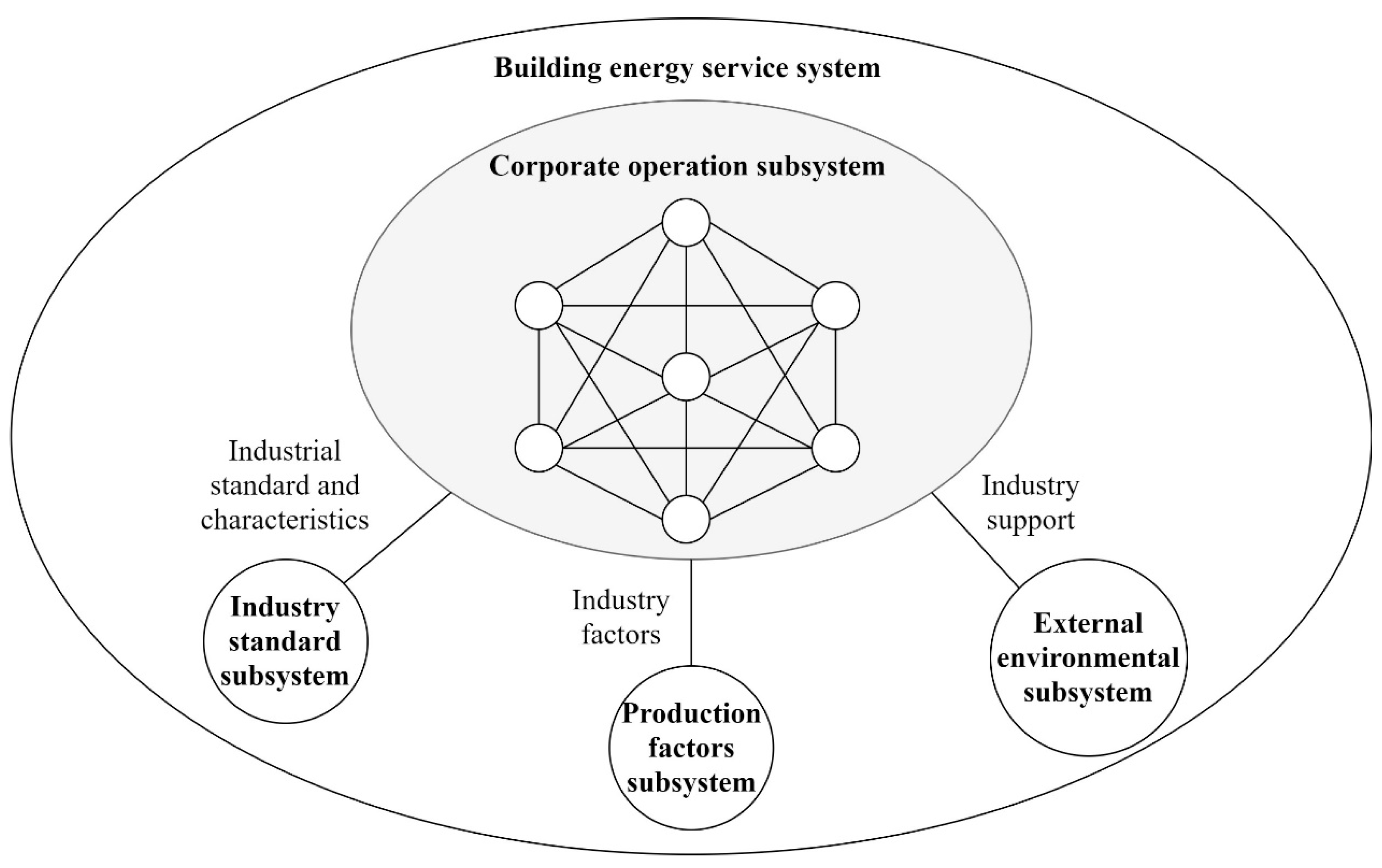
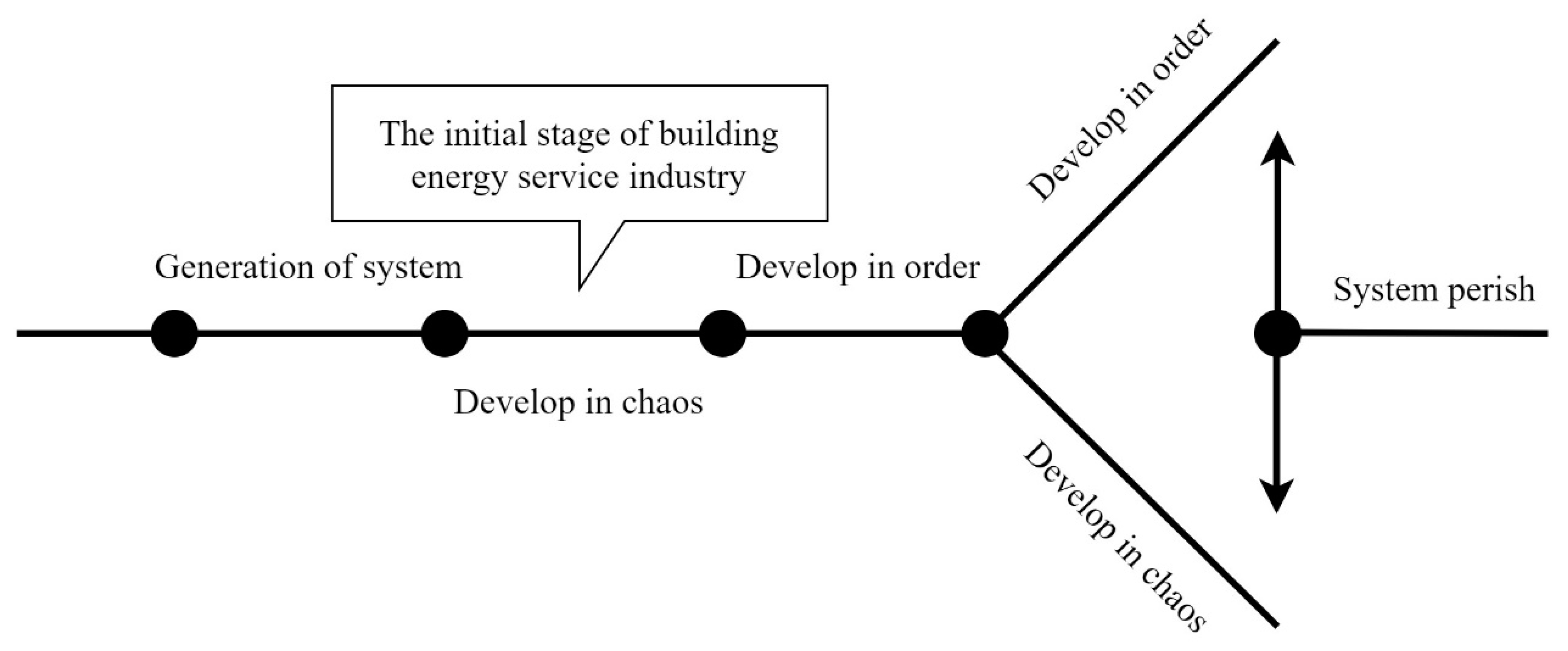
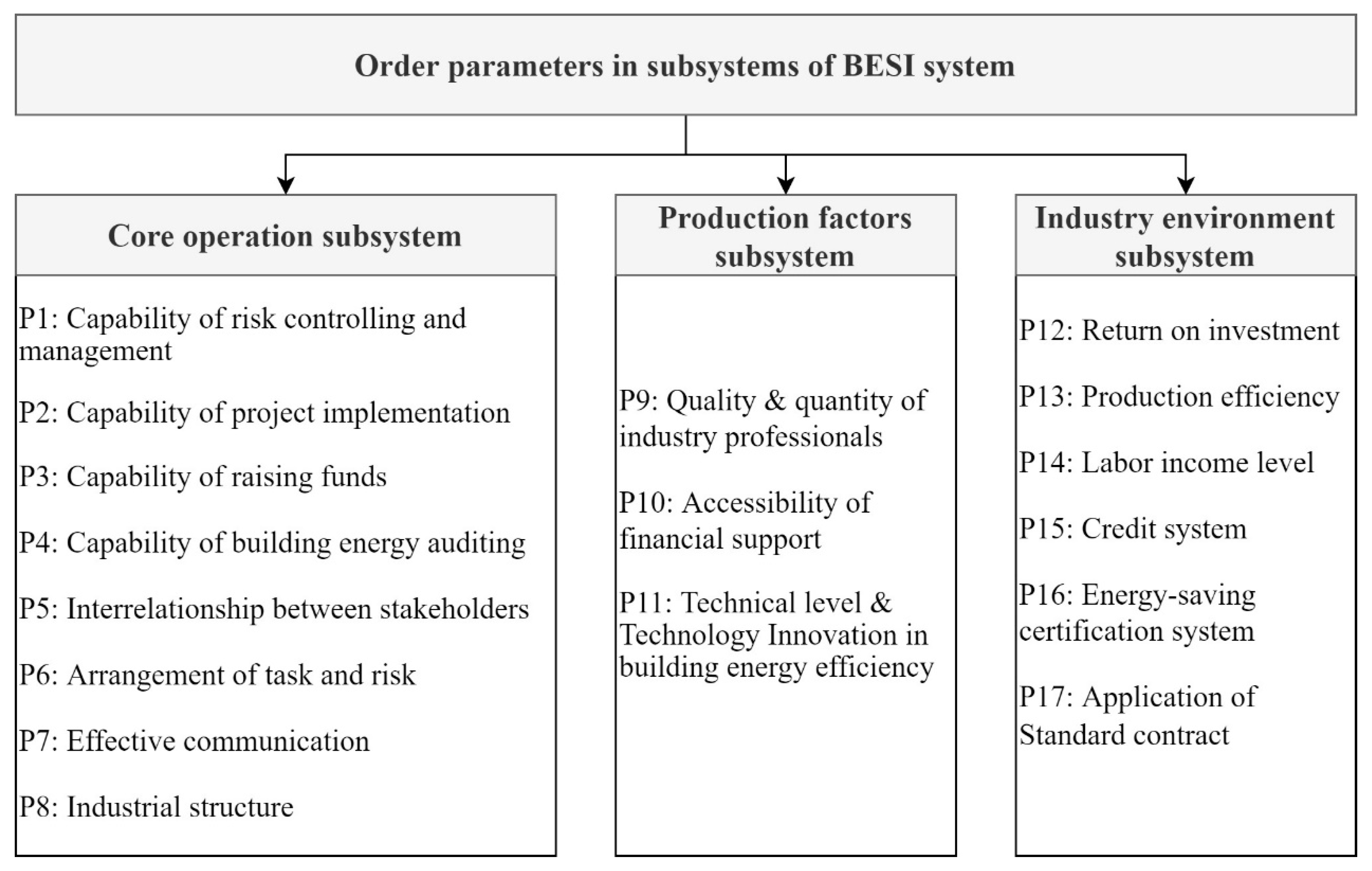
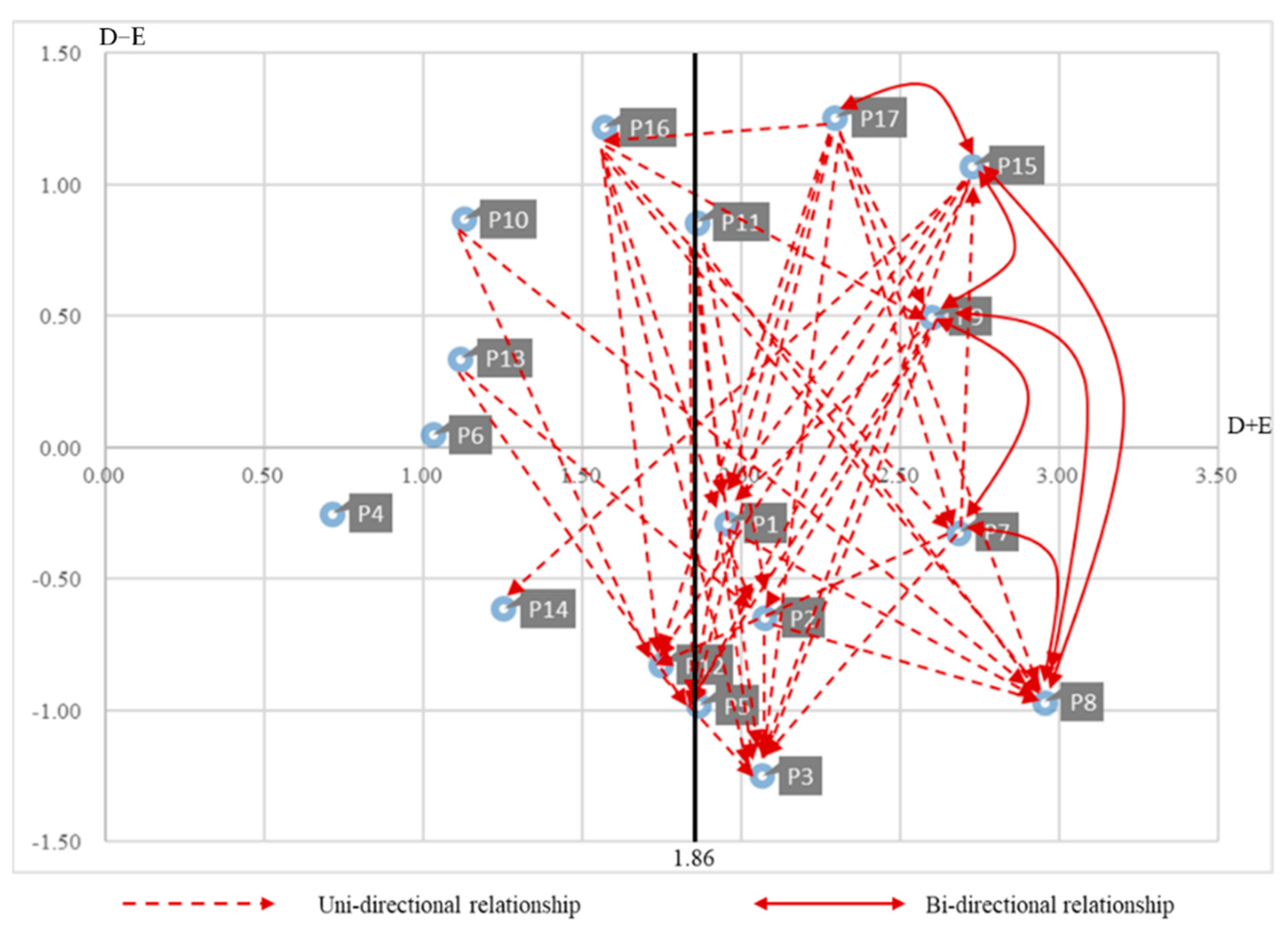

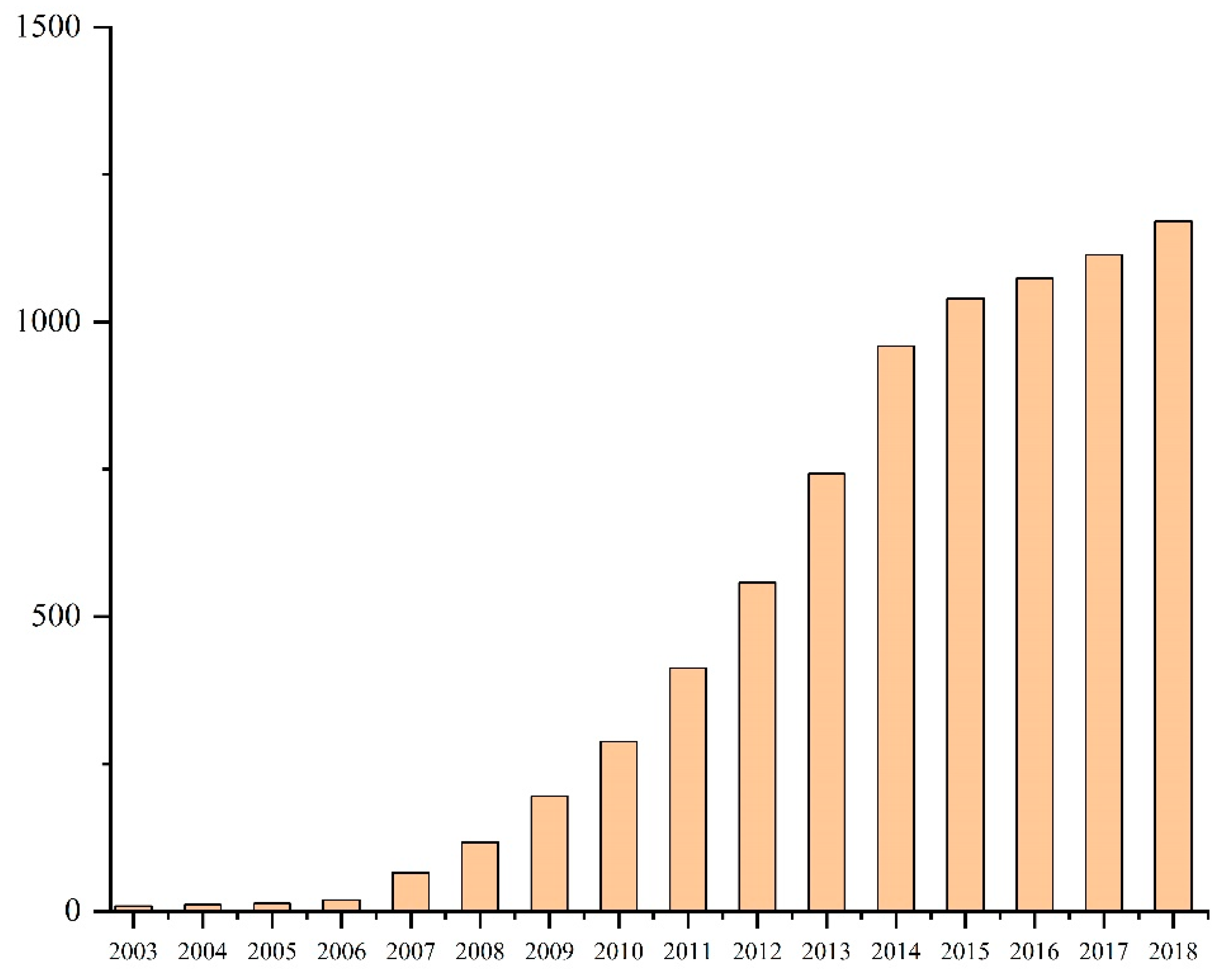
| No. | Affiliation | Position | Participation |
|---|---|---|---|
| 1 | Southeast University | Professor | I-1 |
| 2 | The Hong Kong Polytechnic University | Associate professor | I-1, I-2 |
| 3 | Southeast University | Postdoctoral fellow | I-1 |
| 4 | Chongqing University | Lecturer | I-1, GM |
| 5 | Chongqing University | Professor | I-1, GM |
| 6 | EMCA | Researcher | I-1, GM |
| 7 | EMCA | Researcher | I-1, GM |
| 8 | Lingxiang Environmental Protection Co., Ltd. | Chief executive | GM |
| 9 | China Everbright Bank | Manager | I-1, GM |
| 10 | Jialida Co., Ltd. | Manager | I-1, GM |
| 11 | Zhongjiang Energy Co., Ltd. | Manager | GM |
| 12 | The Hong Kong Polytechnic University | Researcher | I-1 |
| 13 | Datang Energy Saving Technology Co., Ltd. | Technician | GM |
| 14 | Southeast University | Associate professor | I-1 |
| 15 | Aijing Energy Saving Technology Co., Ltd. | Manager | I-1, GM |
| 16 | EMCA | Researcher | I-2 |
| 17 | The Hong Kong Polytechnic University | Professor | I-2 |
| 18 | Huadian Energy Co., Ltd. | Manager | I-1, I-2 |
| 19 | Daneng Energy Saving Technology Co., Ltd. | Technician | I-1, I-2 |
| 20 | Zhiguang Energy Saving Co., Ltd. | Technician | I-2 |
| 21 | Zhengmao Energy Saving Co., Ltd. | Technician | I-1, I-2 |
| 22 | Shengyuan New Energy Co., Ltd. | Manager | I-2 |
| Code | Meaning | References |
|---|---|---|
| P1 | Estimation and control of risk | [29] |
| P2 | Management of building energy service procedures | [29,38] |
| P3 | The rasising of funds from banks and social capital | [18,39,40] |
| P4 | Audit of the amount of energy savings before and after the project’s implementation | [18,37,39] |
| P5 | Interests and responsibility among stakeholders | [17,37,40] |
| P6 | Allocatation of reasonable tasks and risk to involved stakeholders | [18,37,38] |
| P7 | Timely and efficient communication among stakeholders | [18,41] |
| P8 | Proportion of companies above designated size | [41] |
| P9 | Sufficient number of professionally trained staff | [39] |
| P10 | Financial support from all financial channels | [39,41] |
| P11 | Effort towards technological innovation | [37,39,41] |
| P12 | Payback of the project | [38] |
| P13 | The ratio of actual output and maximum output | [42] |
| P14 | The level of income compared to other industries | [43] |
| P15 | Credit system constraining corporate behavior | [18,37,39,43] |
| P16 | Official system for measuring energy savings | [44] |
| P17 | Standard contract used as a template for companies | [44] |
| P1 | P2 | P3 | P4 | P5 | P6 | P7 | P8 | P9 | P10 | P11 | P12 | P13 | P14 | P15 | P16 | P17 | |
|---|---|---|---|---|---|---|---|---|---|---|---|---|---|---|---|---|---|
| P1 | 0 | 3 | 3 | 1 | 1 | 3 | 0 | 0 | 0 | 0 | 0 | 0 | 2 | 0 | 0 | 0 | 0 |
| P2 | 1 | 0 | 2 | 0 | 2 | 2 | 0 | 0 | 0 | 0 | 0 | 2 | 2 | 0 | 0 | 0 | 0 |
| P3 | 0 | 2 | 0 | 0 | 1 | 1 | 0 | 0 | 0 | 1 | 0 | 0 | 0 | 1 | 0 | 0 | 0 |
| P4 | 1 | 0 | 0 | 0 | 1 | 1 | 0 | 0 | 0 | 0 | 0 | 0 | 0 | 0 | 0 | 0 | 0 |
| P5 | 0 | 0 | 2 | 0 | 0 | 3 | 3 | 0 | 0 | 2 | 0 | 1 | 1 | 0 | 2 | 0 | 1 |
| P6 | 1 | 1 | 0 | 0 | 2 | 0 | 2 | 0 | 0 | 1 | 0 | 1 | 1 | 0 | 2 | 0 | 1 |
| P7 | 2 | 2 | 2 | 1 | 3 | 3 | 0 | 0 | 1 | 1 | 0 | 1 | 2 | 0 | 2 | 0 | 1 |
| P8 | 0 | 0 | 1 | 0 | 1 | 2 | 0 | 0 | 2 | 3 | 2 | 0 | 0 | 0 | 2 | 0 | 0 |
| P9 | 3 | 3 | 2 | 2 | 1 | 2 | 1 | 0 | 0 | 1 | 2 | 1 | 2 | 1 | 0 | 0 | 0 |
| P10 | 0 | 0 | 3 | 0 | 1 | 2 | 0 | 0 | 0 | 0 | 0 | 0 | 0 | 1 | 0 | 0 | 0 |
| P11 | 1 | 2 | 0 | 0 | 1 | 1 | 0 | 0 | 1 | 1 | 0 | 1 | 3 | 0 | 0 | 0 | 0 |
| P12 | 0 | 0 | 1 | 0 | 0 | 0 | 0 | 0 | 1 | 0 | 0 | 0 | 1 | 2 | 0 | 0 | 0 |
| P13 | 0 | 2 | 1 | 0 | 0 | 0 | 0 | 0 | 1 | 1 | 0 | 1 | 0 | 1 | 0 | 0 | 0 |
| P14 | 1 | 1 | 0 | 1 | 0 | 0 | 0 | 0 | 2 | 0 | 1 | 1 | 1 | 0 | 0 | 0 | 0 |
| P15 | 3 | 1 | 2 | 0 | 3 | 3 | 3 | 1 | 0 | 3 | 1 | 2 | 2 | 0 | 0 | 0 | 2 |
| P16 | 2 | 1 | 2 | 2 | 1 | 2 | 2 | 0 | 0 | 3 | 0 | 0 | 1 | 0 | 1 | 0 | 2 |
| P17 | 2 | 0 | 1 | 1 | 2 | 2 | 3 | 1 | 0 | 2 | 1 | 1 | 2 | 0 | 2 | 3 | 0 |
| P1 | P2 | P3 | P4 | P5 | P6 | P7 | P8 | P9 | P10 | P11 | P12 | P13 | P14 | P15 | P16 | P17 | |
|---|---|---|---|---|---|---|---|---|---|---|---|---|---|---|---|---|---|
| P1 | 0.02 | 0.15 | 0.15 | 0.04 | 0.08 | 0.15 | 0.02 | 0 | 0.01 | 0.03 | 0 | 0.03 | 0.11 | 0.01 | 0.02 | 0 | 0.01 |
| P2 | 0.05 | 0.03 | 0.11 | 0 | 0.1 | 0.11 | 0.02 | 0 | 0.01 | 0.02 | 0 | 0.1 | 0.1 | 0.02 | 0.02 | 0 | 0.01 |
| P3 | 0.01 | 0.09 | 0.02 | 0 | 0.06 | 0.06 | 0.01 | 0 | 0.01 | 0.05 | 0 | 0.02 | 0.02 | 0.04 | 0.01 | 0 | 0.01 |
| P4 | 0.04 | 0.01 | 0.01 | 0 | 0.05 | 0.05 | 0.01 | 0 | 0 | 0.01 | 0 | 0.01 | 0.01 | 0 | 0.01 | 0 | 0.01 |
| P5 | 0.04 | 0.05 | 0.14 | 0.01 | 0.07 | 0.19 | 0.16 | 0.01 | 0.01 | 0.12 | 0.01 | 0.07 | 0.09 | 0.02 | 0.11 | 0.01 | 0.06 |
| P6 | 0.07 | 0.08 | 0.06 | 0.01 | 0.13 | 0.07 | 0.12 | 0.01 | 0.01 | 0.08 | 0.01 | 0.07 | 0.09 | 0.01 | 0.11 | 0.01 | 0.06 |
| P7 | 0.12 | 0.14 | 0.16 | 0.05 | 0.19 | 0.21 | 0.06 | 0.01 | 0.05 | 0.1 | 0.01 | 0.09 | 0.14 | 0.02 | 0.12 | 0.01 | 0.07 |
| P8 | 0.04 | 0.04 | 0.09 | 0.01 | 0.09 | 0.14 | 0.04 | 0 | 0.09 | 0.15 | 0.09 | 0.03 | 0.05 | 0.02 | 0.1 | 0 | 0.02 |
| P9 | 0.15 | 0.18 | 0.14 | 0.09 | 0.1 | 0.15 | 0.07 | 0 | 0.02 | 0.07 | 0.08 | 0.08 | 0.14 | 0.06 | 0.03 | 0 | 0.01 |
| P10 | 0.01 | 0.02 | 0.13 | 0 | 0.06 | 0.1 | 0.02 | 0 | 0.01 | 0.02 | 0 | 0.01 | 0.01 | 0.05 | 0.01 | 0 | 0.01 |
| P11 | 0.06 | 0.11 | 0.04 | 0.01 | 0.07 | 0.08 | 0.02 | 0 | 0.05 | 0.06 | 0.01 | 0.06 | 0.14 | 0.02 | 0.01 | 0 | 0.01 |
| P12 | 0.01 | 0.02 | 0.05 | 0.01 | 0.01 | 0.01 | 0 | 0 | 0.05 | 0.01 | 0.01 | 0.01 | 0.05 | 0.08 | 0 | 0 | 0 |
| P13 | 0.01 | 0.09 | 0.06 | 0.01 | 0.02 | 0.02 | 0.01 | 0 | 0.05 | 0.05 | 0.01 | 0.05 | 0.02 | 0.05 | 0 | 0 | 0 |
| P14 | 0.06 | 0.07 | 0.03 | 0.05 | 0.02 | 0.03 | 0.01 | 0 | 0.08 | 0.01 | 0.05 | 0.05 | 0.07 | 0.01 | 0 | 0 | 0 |
| P15 | 0.17 | 0.12 | 0.18 | 0.02 | 0.2 | 0.23 | 0.18 | 0.04 | 0.03 | 0.18 | 0.05 | 0.13 | 0.16 | 0.03 | 0.06 | 0.01 | 0.11 |
| P16 | 0.12 | 0.09 | 0.15 | 0.09 | 0.11 | 0.17 | 0.12 | 0.01 | 0.01 | 0.16 | 0.01 | 0.04 | 0.09 | 0.02 | 0.08 | 0.01 | 0.1 |
| P17 | 0.14 | 0.08 | 0.14 | 0.06 | 0.16 | 0.19 | 0.18 | 0.04 | 0.02 | 0.15 | 0.05 | 0.09 | 0.15 | 0.02 | 0.13 | 0.12 | 0.04 |
| D | E | D + E | D − E | Weight | |
|---|---|---|---|---|---|
| P1 | 0.83 | 1.12 | 1.95 | −0.29 | 0.06 |
| P2 | 0.71 | 1.36 | 2.07 | −0.65 | 0.06 |
| P3 | 0.41 | 1.66 | 2.06 | −1.25 | 0.07 |
| P4 | 0.23 | 0.48 | 0.71 | −0.25 | 0.02 |
| P5 | 0.44 | 1.42 | 1.86 | −0.98 | 0.06 |
| P6 | 0.54 | 0.49 | 1.03 | 0.05 | 0.03 |
| P7 | 1.18 | 1.50 | 2.68 | −0.32 | 0.08 |
| P8 | 0.99 | 1.96 | 2.95 | −0.97 | 0.09 |
| P9 | 1.55 | 1.05 | 2.60 | 0.50 | 0.08 |
| P10 | 1.00 | 0.13 | 1.13 | 0.87 | 0.04 |
| P11 | 1.36 | 0.50 | 1.86 | 0.86 | 0.06 |
| P12 | 0.46 | 1.29 | 1.74 | −0.83 | 0.06 |
| P13 | 0.73 | 0.39 | 1.11 | 0.34 | 0.03 |
| P14 | 0.32 | 0.93 | 1.25 | −0.61 | 0.04 |
| P15 | 1.90 | 0.83 | 2.72 | 1.07 | 0.09 |
| P16 | 1.39 | 0.18 | 1.57 | 1.22 | 0.06 |
| P17 | 1.77 | 0.52 | 2.29 | 1.25 | 0.08 |
| P1 | P2 | P3 | P4 | P5 | P6 | P7 | P8 | P9 | P10 | P11 | P12 | P13 | P14 | P15 | P16 | P17 | |
|---|---|---|---|---|---|---|---|---|---|---|---|---|---|---|---|---|---|
| P1 | 0.15 | 0.15 | 0.11 | 0.15 | |||||||||||||
| P2 | 0.11 | 0.11 | |||||||||||||||
| P3 | |||||||||||||||||
| P4 | |||||||||||||||||
| P5 | 0.15 | 0.18 | 0.14 | 0.14 | 0.15 | ||||||||||||
| P6 | 0.13 | ||||||||||||||||
| P7 | 0.11 | 0.14 | |||||||||||||||
| P8 | |||||||||||||||||
| P9 | |||||||||||||||||
| P10 | |||||||||||||||||
| P11 | 0.14 | 0.12 | 0.19 | 0.16 | 0.11 | ||||||||||||
| P12 | 0.13 | 0.12 | 0.11 | ||||||||||||||
| P13 | 0.12 | 0.14 | 0.16 | 0.14 | 0.19 | 0.21 | 0.12 | ||||||||||
| P14 | 0.15 | 0.14 | |||||||||||||||
| P15 | 0.17 | 0.18 | 0.18 | 0.13 | 0.16 | 0.23 | 0.18 | 0.11 | |||||||||
| P16 | 0.12 | 0.15 | 0.16 | 0.11 | 0.17 | 0.12 | |||||||||||
| P17 | 0.14 | 0.14 | 0.15 | 0.15 | 0.16 | 0.19 | 0.18 | 0.13 | 0.12 |
Publisher’s Note: MDPI stays neutral with regard to jurisdictional claims in published maps and institutional affiliations. |
© 2022 by the authors. Licensee MDPI, Basel, Switzerland. This article is an open access article distributed under the terms and conditions of the Creative Commons Attribution (CC BY) license (https://creativecommons.org/licenses/by/4.0/).
Share and Cite
Zheng, S.; Huang, R.; Zhuang, T. Evolution of China’s Building Energy Service Industry Based on Synergetic Theory. Appl. Sci. 2022, 12, 12648. https://doi.org/10.3390/app122412648
Zheng S, Huang R, Zhuang T. Evolution of China’s Building Energy Service Industry Based on Synergetic Theory. Applied Sciences. 2022; 12(24):12648. https://doi.org/10.3390/app122412648
Chicago/Turabian StyleZheng, Saina, Ruopeng Huang, and Taozhi Zhuang. 2022. "Evolution of China’s Building Energy Service Industry Based on Synergetic Theory" Applied Sciences 12, no. 24: 12648. https://doi.org/10.3390/app122412648
APA StyleZheng, S., Huang, R., & Zhuang, T. (2022). Evolution of China’s Building Energy Service Industry Based on Synergetic Theory. Applied Sciences, 12(24), 12648. https://doi.org/10.3390/app122412648







